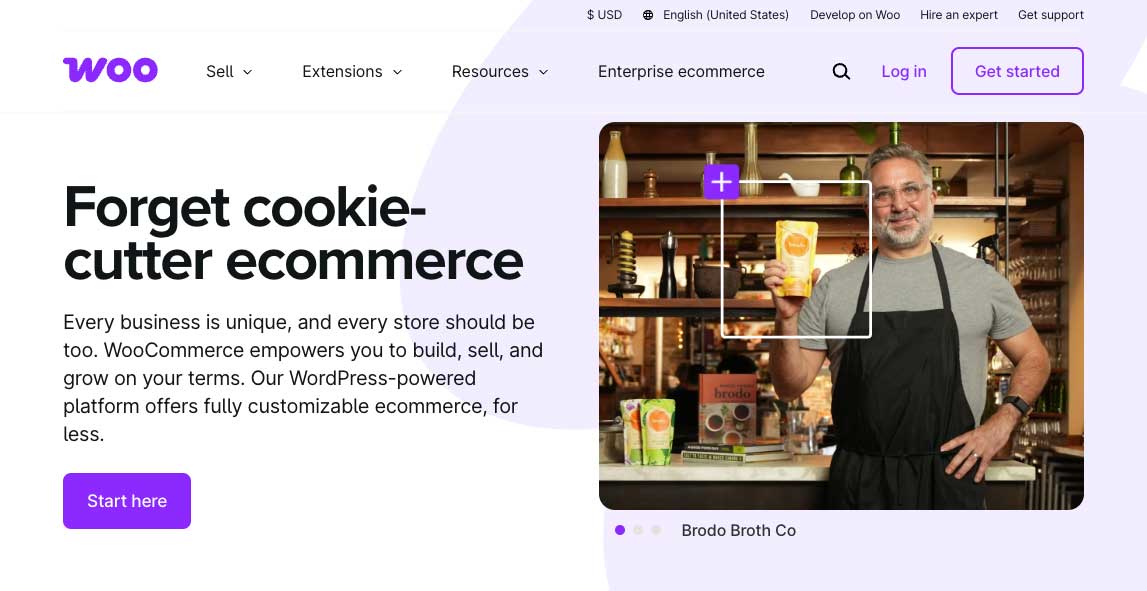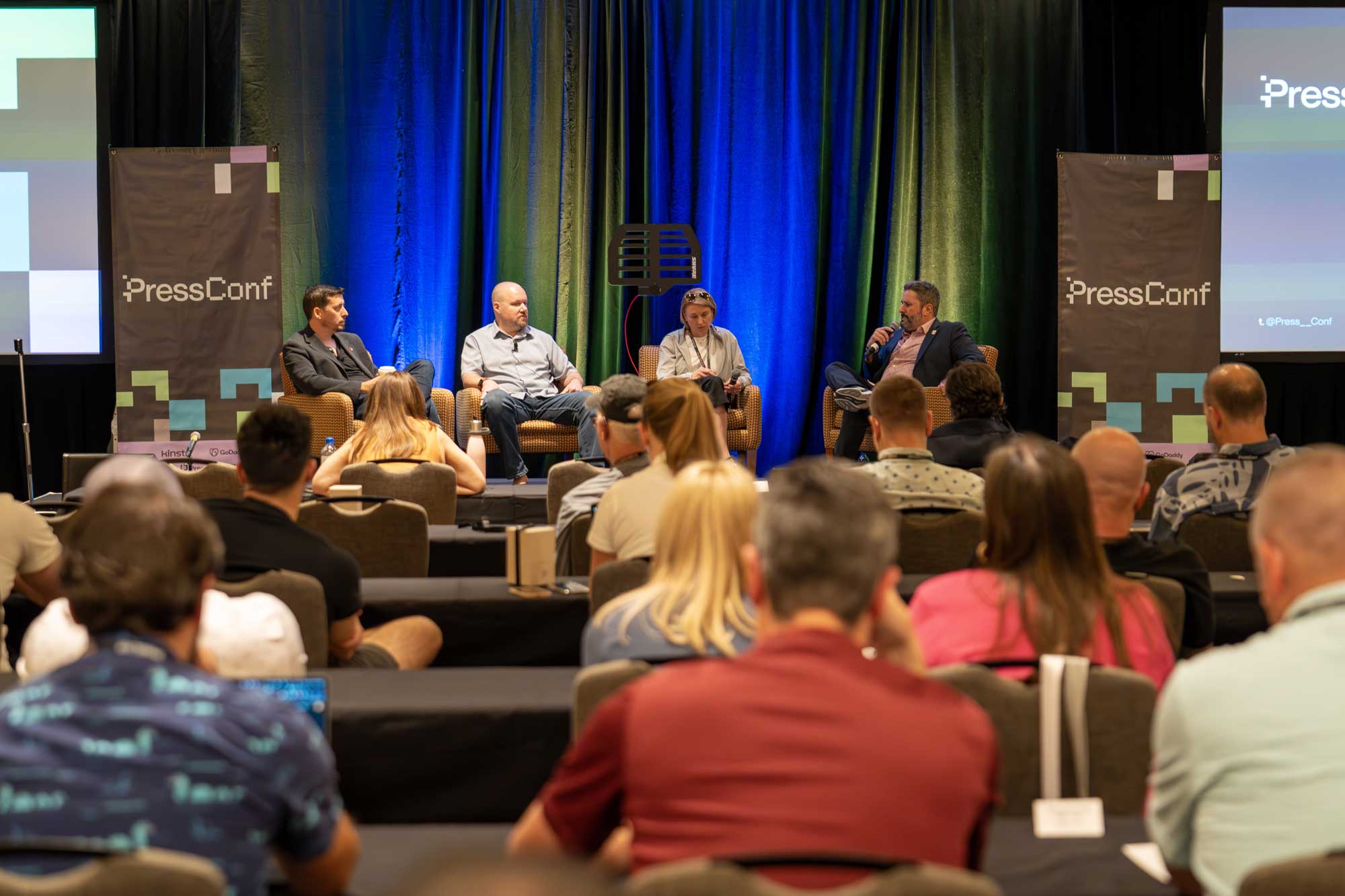Woo rolled out a brand refresh this week, unveiling a modernized look, updated colors, and new logo that are winning over WooCommerce developers.
Announcing the “glow-up” on the Woo blog, Chief Marketing Officer Tamara Niesen said the new look result from a “ton of collaboration” across the company aimed at making Woo stand out from its competitors.
“With the updated brand, we can invest more in driving awareness of WooCommerce—which is becoming increasingly important as we face challenges from competitors with high brand recognition and deep pockets,” Niesen said. “It’s our opportunity to put a stake in the ground about who Woo is and why we’re the best platform for building successful businesses for the long term.”
The refreshed branding has been in the works for months. Niesen first introduced the new logo during her State of the Woo address at WooSesh in October 2024, describing it as “bold, fresh, and better aligned with what we do and who we’re for.”
Woo is owned by Automattic, the company behind WordPress.com, which acquired WooCommerce in 2015.
A market leader, despite challenges
WooCommerce is the leading ecommerce platform, powering 3.7 million online stores, including 31% of the top 1 million e-commerce sites, according to Woo.
According to W3Techs, 9.2% of all websites use WooCommerce, while WordPress, its underlying platform, powers 43.6% of the web. In comparison, Shopify is used by 4.7% of all websites, and Wix powers 3.4%.
However, WooCommerce faces tough competition from these SaaS platforms, which invest heavily in sales and marketing. According to Shopify’s Q2 2024 financial results, the company spent $353 million on sales and marketing, while Wix reported spending $109.1 million in Q3 2024.
“One of the reasons we refreshed the Woo identity was that we needed a brand that stands out in the market and can compete with the slick marketing and brand work that many SaaS companies excel at,” Niesen said.
The brand refresh is the latest evolution in Woo’s ongoing efforts to define its identity. In October 2023, WooCommerce rebranded as “Woo,” a shorter, more playful version of the company name that many customers were already using.
The rebrand included migrating its domain from WooCommerce.com to woo.com. However, the March 2024 Google Search algorithm update hit Woo’s traffic hard, forcing the company to revert to WooCommerce.com in April 2024 to regain its traffic.
A shift in strategy
The refresh isn’t just aesthetic—it reflects a strategic shift in how Woo positions its product and communicates its value. Niesen said the company invested heavily in market research to better understand its audience as part of the rebrand.
“We’ve put in a lot of research into understanding our customers, the market, and who WooCommerce supports best: for both the merchants that operate stores day to day and the developers who build those stores,” she said.
“While WooCommerce can be a good fit for businesses of all shapes and sizes, we find where it really shines is for already-established businesses looking for the flexibility and customizability to take their success to the next level.”
Built in-house
One of the most notable aspects of the rebrand is that it was developed entirely in-house, with the visual aspects led by Woo’s Head of Design, Daniel Nieuwenhuizen.
“I absolutely LOVE the new @WooCommerce branding! What makes it even more special is that it was done entirely in-house,” Woo Core Product Manager James Kemp posted on X. “It’s not just the logo—the colors are refreshed, and the brand now runs through many other elements on the site. Fantastic job from the team 🎉”
Woo’s Artistic Director and product lead Beau Lebens echoed Kemp’s words, adding, “I’m really proud of the (internal!) team that worked so hard to create, refine, and now roll this out. This new brand identity reflects the energy and vision of how we’re showing up to democratize commerce, along with our awesome ecosystem 🚀.”
Woo developers also welcomed the rebrand, praising its execution and attention to detail.
“Congrats @WooCommerce on the new logo and branding! 👏 Also, props to whoever designed the play button animation—fun little detail! 😄” posted Robin Pietersen, co-founder of Grenade, a WooCommerce agency.
WooCommerce developer Rodolfo Melogli added, “Rarely do you see a rebrand that works this well. In this day and age, it’s refreshing to witness one done right. Congrats!”
A more integrated platform
The rebrand is part of Woo’s broader evolution toward building a more integrated and powerful platform. In December 2024, Lebens outlined Woo’s commitment to enhancing performance at scale, delivering modern commerce experiences, and incorporating essential features directly into the core platform—a strategy Woo is calling “More in Core.”
“We’re now expanding WooCommerce core to include essential features that previously required extensions, ultimately creating a more integrated, user-friendly foundation,” Lebens wrote in WooCommerce in 2025: Building a platform for the future. “This shift aligns WooCommerce more closely with industry expectations and simplifies the experience for everyone involved.”
As part of this effort, Woo recently added brand functionality to WooCommerce. The company is also actively developing an MVP for Cost of Goods Sold and is working on Back in Stock Notifications and Shipment Tracking.
“By moving essential functionality—like brand management—into core, we’re reducing the need for custom solutions, speeding up launch times, and freeing up developers to work on more unique store experiences,” Lebens said.
In November, Kemp took on Woo’s Core Product Manager role, tasked with shaping WooCommerce’s vision and leading the “More in Core” initiative. Kemp has been very engaged with WooCommerce developers, discussing platform changes as a Do the Woo host, hosting office hours, asking developers for feedback on social media, and even asking store owners to contact him directly so he can help.
Meanwhile, WooCommerce 9.6.1, released this week, incorporates elements of the new branding into the plugin itself.








